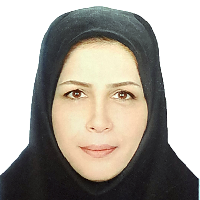Developing a Framework for Planning Recreational Areas Using Recreation Opportunities Spectrum
The Recreation Opportunities Spectrum (ROS) framework is a method used to manage visitor recreational areas by determining and allocating spaces based on a spectrum of recreational opportunities tailored to the environment, as well as the needs and preferences of the community. This research applied the ROS to develop a recreational land-use plan for the Gorgan watershed in Iran. To begin, the study assessed the region's capacity to identify available recreational opportunities and preferences. It estimated the demand for these opportunities and prioritized them accordingly. Next, a weighted linear combination of recreational areas was identified using a multi-criteria evaluation method. Following this, the ROS framework was revised to create new categorizations based on local conditions and guidelines, including the land’s recreational potential, available opportunities, and community needs. This updated framework, ROS2, consists of eight categories: natural, semi-natural, non-motorized, semi-natural motorized, slightly developed rural, developed rural, culturally disjointed, and urban or adjacent urban areas. The final zones proposed for recreational planning and development were based on ROS2. The findings of this research, utilizing a systematic framework for land recreational planning, can help achieve a desirable recreational experience, meet the community's needs, protect the environment, and minimize the ecological impacts of recreational development. Moreover, this framework can serve as a guide for planning and tourism management in similar areas.
-
Investigating the Effective Factors on Farmers’ Participation in Using Biological Pest Control Methods in Torshiz Area
, Fatemeh Ghomanjani, Farzad Mehrjo*
Journal of Human Environment and Health Promotion, Spring 2025 -
Monitoring and evaluating land use changes using remote sensing techniques and satellite images (case study: Bam plain)
Maryam Safavi, *, Hadi Dehghan
Agriculture, Environment and Society, Summer- Autumn 2024 -
A Review on the Role of 3D Visualization in Landscape Planning
Sepideh Saeidi *,
Environment and Development Journal, -
Determining and prioritizing the selection criteria of urban plant species
Zohreh Akhgari Sangatash, *, , Fatemeh Hashemi
Journal of Environmental Sciences and Technology, -
Land surface temperature (LST) variability in local climate zones (LCZs) in semi-arid regions (Case study: Bojnourd City)
Zzahra Parvar, *, Sepideh Saeidi
Journal of Natural Environment, -
Zoning of natural hazards for identify the vulnerable parts of the gas feeding network in Golestan province
Pouya Kianoosh, *, Abdolrassoul Salmanmahiny, Hamidreza Kamyab, Sepideh Saeidi
Geographical Planning of Space Quarterly Journal,





